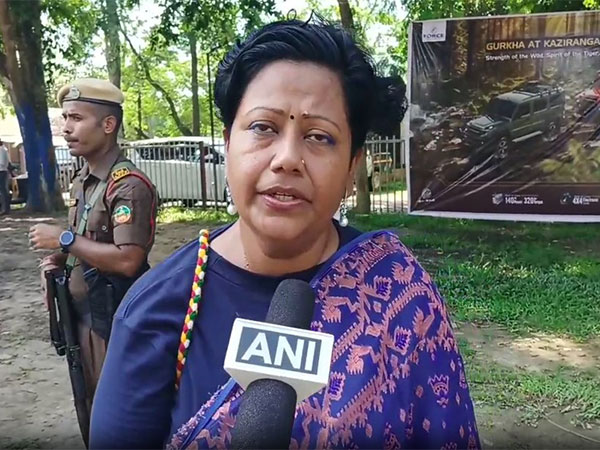Landmark Grassland Bird Survey in Kaziranga National Park
Kaziranga National Park, located in Assam, India, has made a significant contribution to wildlife conservation with the release of its first-ever Grassland Bird Survey. The survey identified 43 bird species, including one critically endangered, two endangered, and six vulnerable species, as well as several regional endemic birds. This initiative marks a milestone in documenting and protecting grassland-dependent bird species within the Brahmaputra floodplains.
The survey, conducted between March 18 and May 25, covered the Eastern Assam, Biswanath, and Nagaon Wildlife Divisions. It utilized a combination of point count surveys and passive acoustic monitoring to assess grassland avifauna across this ecologically important area. According to Dr Sonali Ghosh, Field Director of Kaziranga National Park and Tiger Reserve, the survey recorded 43 grassland bird species, highlighting the region’s rich biodiversity.
Key Highlights of the Survey
Among the notable findings was the identification of ten focal species that are either globally threatened or endemic to the Brahmaputra floodplains. These include the Bengal Florican, Swamp Francolin, Finn’s Weaver, Swamp Grass Babbler, Jerdon’s Babbler, Slender-billed Babbler, Black-breasted Parrotbill, Marsh Babbler, Bristled Grassbird, and Indian Grassbird. The survey placed particular emphasis on the endangered Finn’s Weaver, which is considered a vital indicator of grassland health.
The study also focused on finding the breeding colony of the Finn’s Weaver, a master nest-builder known for its intricate nests. The deployment of passive acoustic recorders allowed for non-invasive and continuous monitoring in inaccessible or high-risk areas. This approach improved species detection, especially for shy and cryptic birds, enhancing the accuracy and depth of the findings.
Critical Habitats and Conservation Efforts
The report identifies several critical grassland habitats within Kaziranga that support significant populations of threatened and endemic species. Notably, the discovery of a breeding colony of the Endangered Finn’s Weaver in the Kohora Range is a pivotal finding. This discovery underscores the need for focused habitat protection and management to ensure the survival of these species.
Dr Ghosh emphasized that the report is the result of a collaborative effort by a dedicated team of forest officials, scientists, and conservationists. Experts involved in the survey included Dr Asad R Rahmani, Dr Anwar Uddin Choudhury, Dr Ranjan Kumar Das, Dr Udayan Borthakur, Dr Sonali Ghosh, Chiranjib Bora, Dr Smarajit Ojah, Dr Biswajit Chakdar, Shyamal Saikia, Hina Brahma, Dr Leons Mathew Abraham, Sujan Chatterjee, Abidur Rahman, Bitupan Kalita, Arif Hussain, Jugal Borah, Rahul Sarma, Luson Prakash Gogoi, Dipankar Deka, Neeraj Bora, Arun C Vignesh, Khagesh Pegu, and Rajib Hazarika.
Significance of the Report
The survey report was released by the Minister of Environment, Forest and Climate Change during an event on July 11 at Kaziranga. The minister appreciated the efforts of the park authorities in documenting lesser-known aspects of biodiversity. The report represents an important first step in the long-term conservation of grassland birds, emphasizing the need for continued ecological monitoring and adaptive management to safeguard these fragile ecosystems.
This pioneering work reaffirms Kaziranga’s status not only as a stronghold for charismatic megafauna but also as a critical refuge for avian biodiversity within the Indo-Burma biodiversity hotspot. The report serves as a model for integrating rigorous science into protected area management, offering a replicable template for other landscapes across India and beyond.
Regional Endemic Birds and Ecological Health
Assam Forest Minister Chandra Mohan Patowary highlighted the significance of the survey, noting that Kaziranga National Park and Tiger Reserve’s first-ever grassland survey recorded 43 grassland bird species, including 1 Critically Endangered, 2 Endangered, and 6 Vulnerable species, plus several regional endemics. He pointed out that the Brahmaputra floodplain ecosystem boasts the highest diversity of grassland obligate birds in India, reflecting the habitat’s robust health and effective protection.
The survey underscores the importance of science-backed management in preserving the unique biodiversity of the region. With its focus on grassland bird species, the initiative sets a precedent for future conservation efforts, ensuring that the ecological integrity of the Brahmaputra floodplains is maintained for generations to come.






